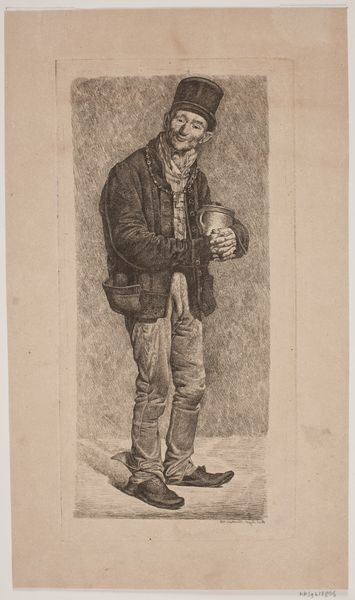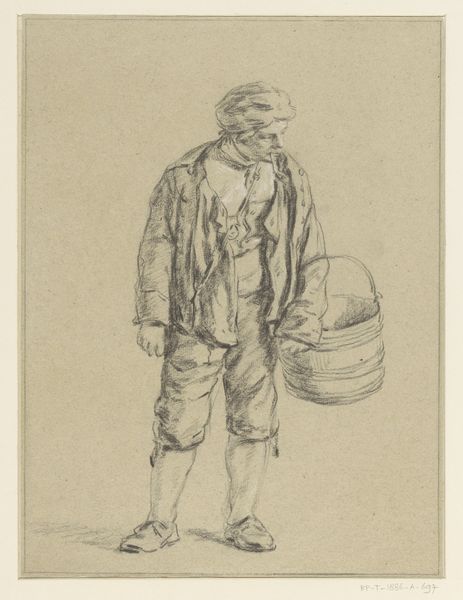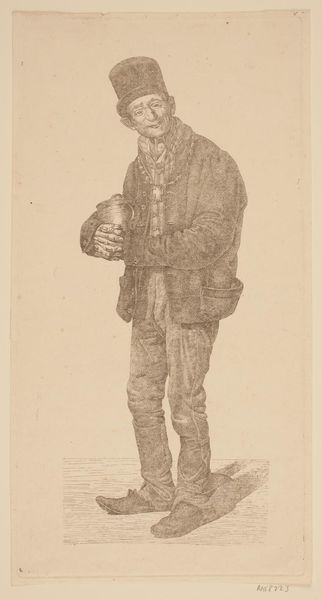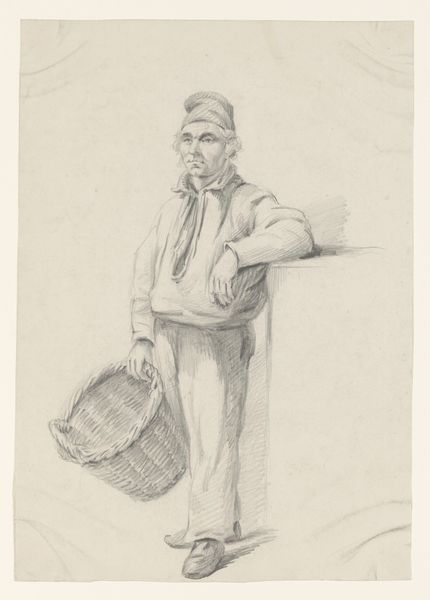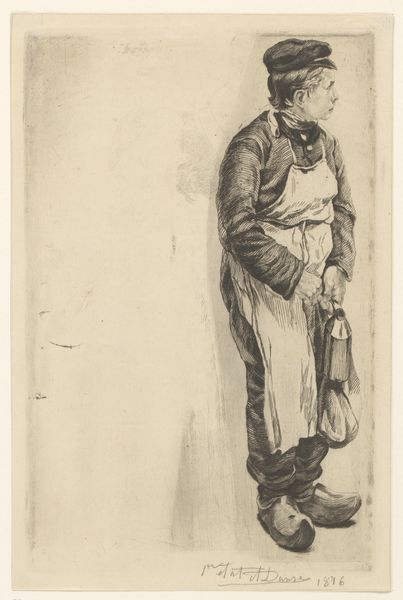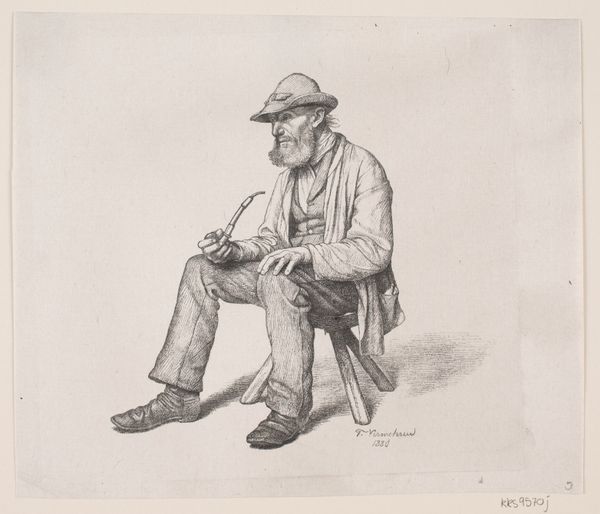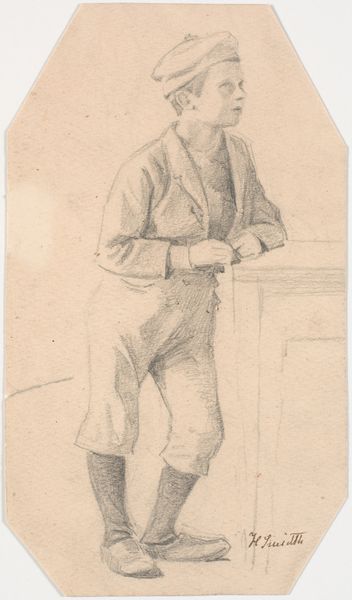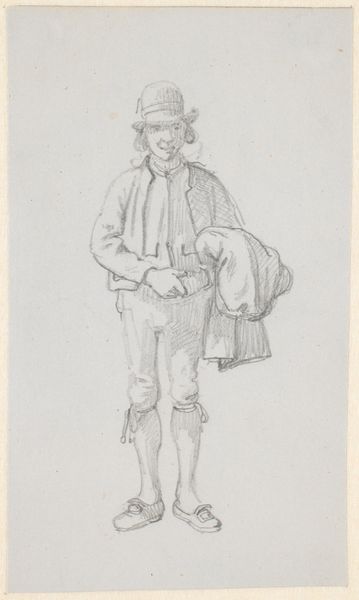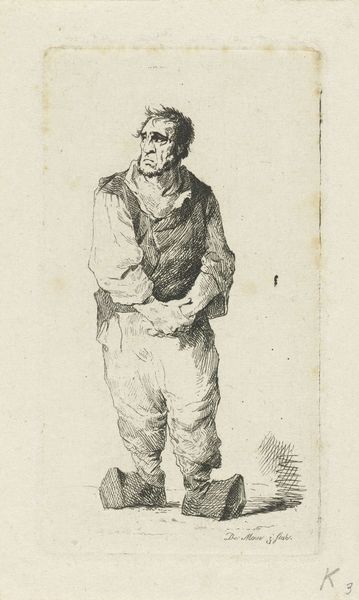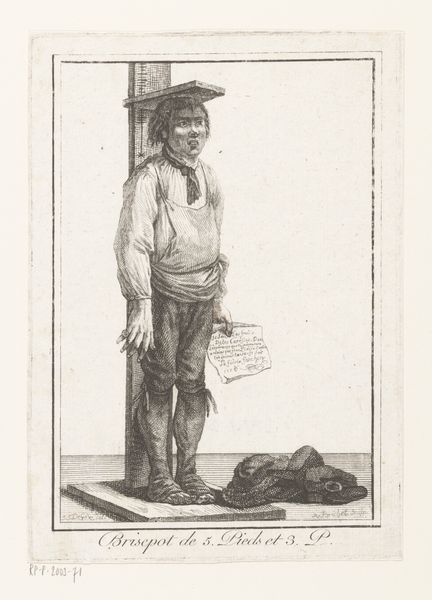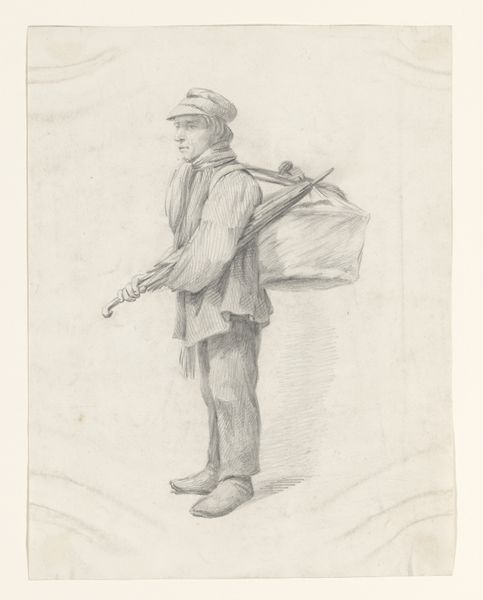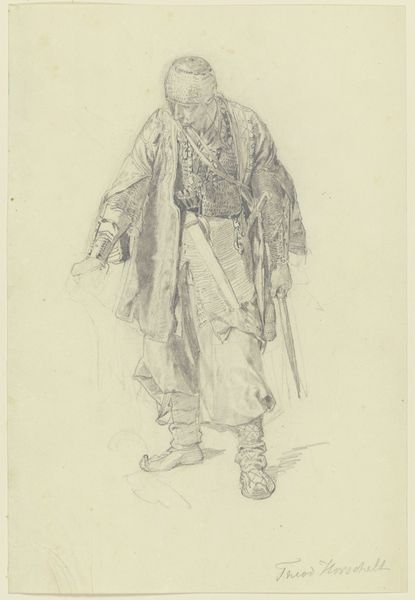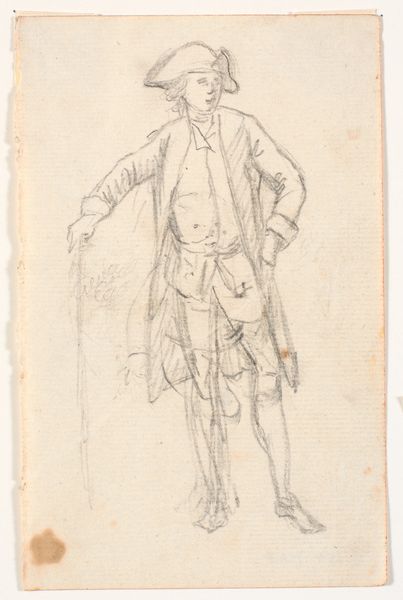
drawing, print, engraving
#
drawing
# print
#
pencil drawing
#
romanticism
#
genre-painting
#
engraving
Dimensions: 230 mm (height) x 113 mm (width) (plademaal)
Editor: Ernst Meyer's "Finessen-Seppl," created in 1822, is a striking engraving. The level of detail he achieved with the printmaking is fascinating, from the old man’s weathered face to the texture of his clothes. How should we approach interpreting a work like this from a material perspective? Curator: Let’s look beyond just the image itself and delve into its production. Engraving, as a process, requires specialized tools and skill. The matrix itself, often metal, dictated certain possibilities and limitations for Meyer. How do you think the choice of engraving as a medium impacts the content of the work? Editor: Well, engravings, especially in the 19th century, were often used for mass reproduction, making art more accessible. Does that democratizing aspect change how we view this image of what seems to be a common man? Curator: Precisely. The materiality pushes us to consider accessibility and consumption. "Fine arts" prints like these blurred the line between artistic expression and commercial production, raising questions about who art was for and who had the resources to make and distribute it. What do you think was the intended audience? Editor: Based on the engraving technique, and its distribution potential, maybe not the high society typically associated with Romanticism, but a more middle-class audience seeking relatable, genre-based imagery? Curator: Exactly! The print material, and the engraving process itself, speak volumes about shifting social structures, economics, and the evolving role of art and the artist in society during the Romantic period. It’s not just about *what* is depicted, but *how* and *for whom* it was made. Editor: That’s fascinating. I hadn’t thought about the way the material itself influences the message of a piece. Curator: Focusing on material and production makes us realize this artwork’s cultural value beyond aesthetics. It shows us art’s deep connection to industry and society.
Comments
No comments
Be the first to comment and join the conversation on the ultimate creative platform.
